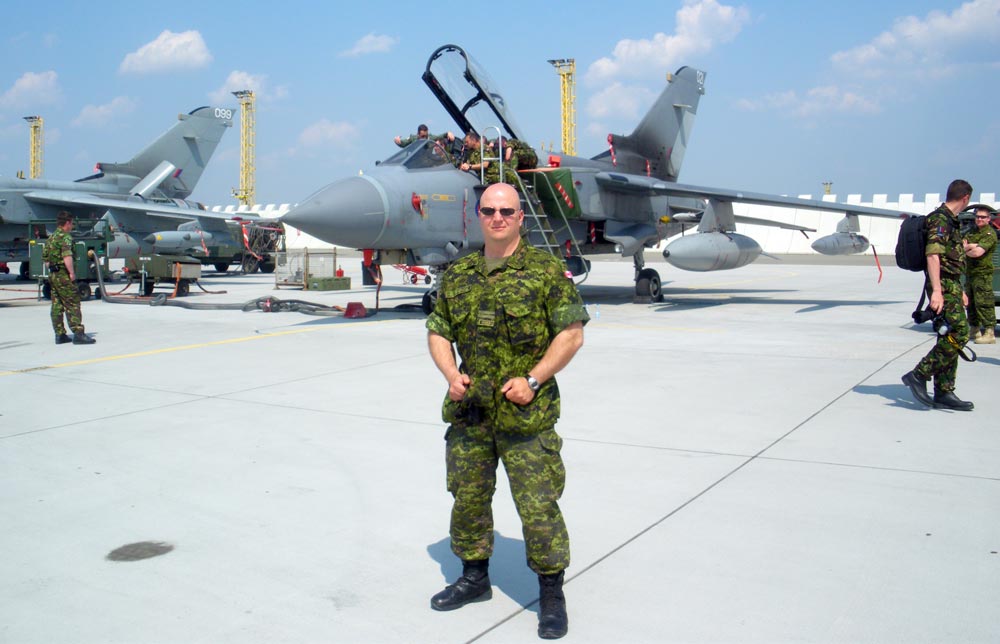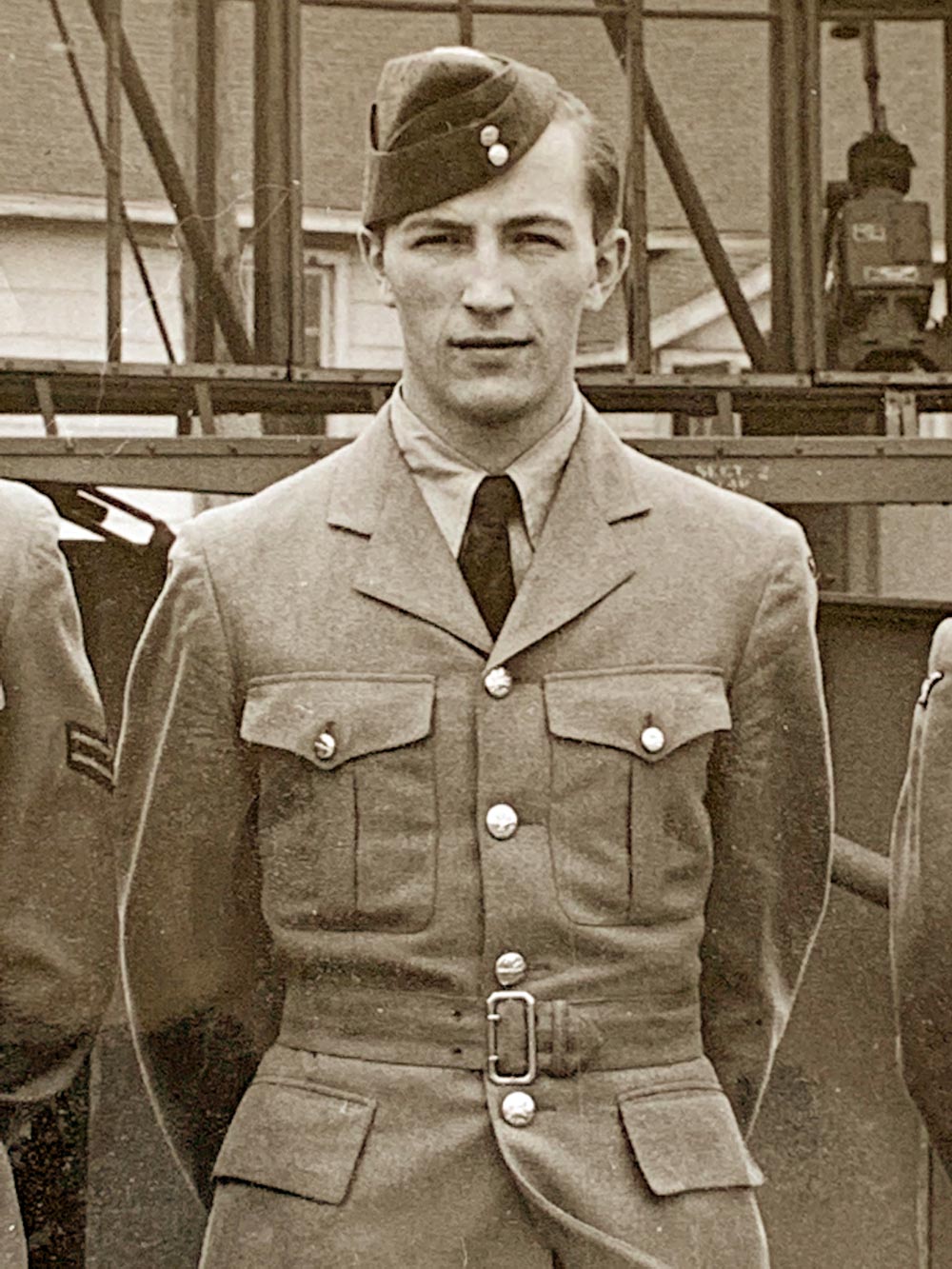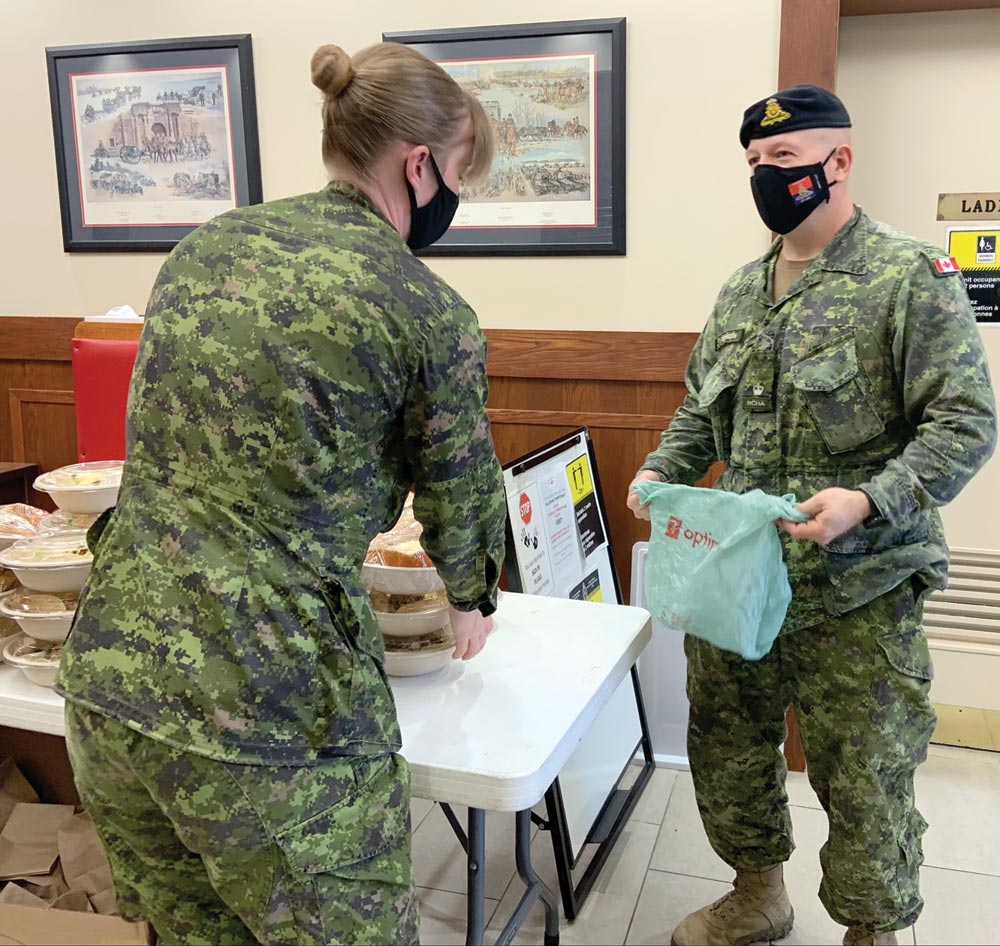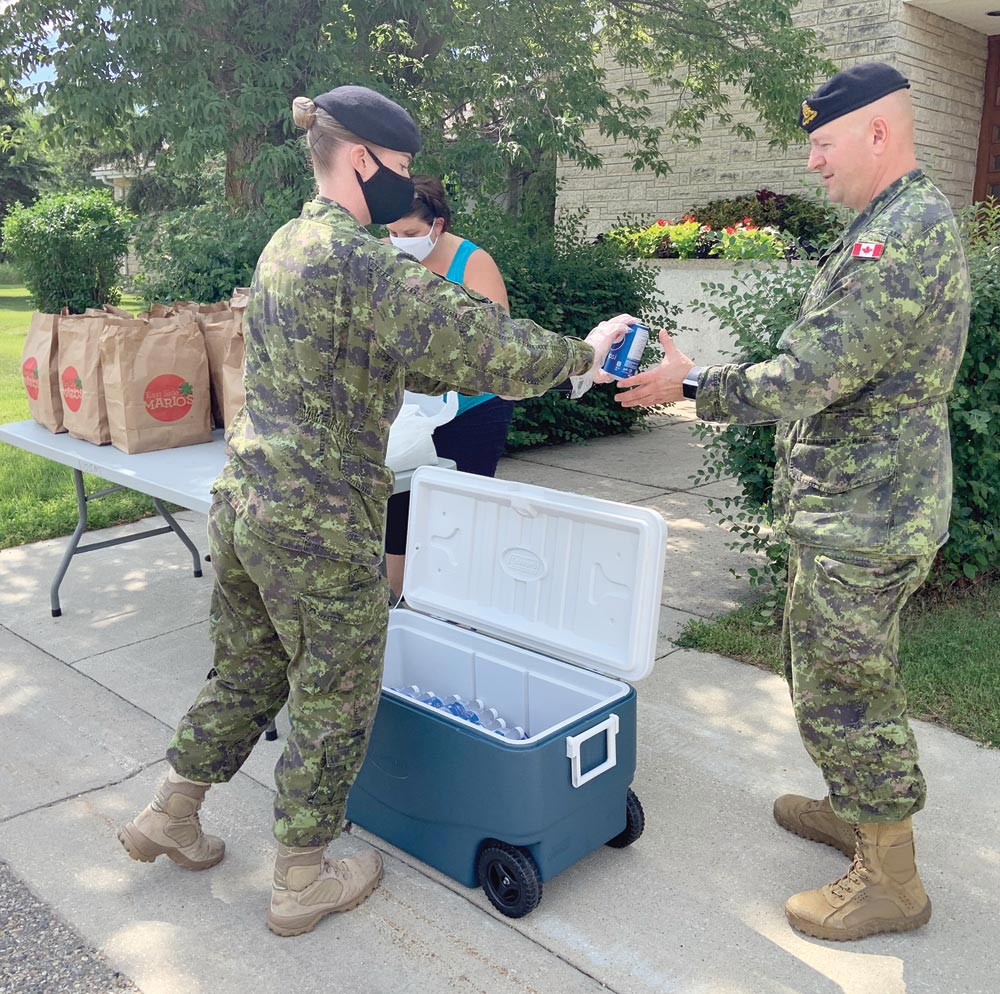




Jules Xavier
Shilo Stag
As a child, Maj Scott Youngson played “Army man” with his friends.
However, when he chose a career path in the Canadian Armed Forces (CAF) it was the RCAF which piqued his attention — following in his father’s footsteps.
However, taking flight as an RCAF pilot did not work out for Maj Youngson. Instead, the RCA benefitted from the decision made by the Base’s newest COS to find a different CAF trade.
Born in Moose Jaw, SK, the RCAF brat lived in Bushell Park in 15 Wing’s RHUs until he was seven. His father Capt Jack Youngson retired from the RCAF in 1979, which saw a young Scott Youngson move to Regina where he grew up until joining the CAF in 1990.
Looking to learn more about the 51-year-old COS, and what the job entails for CFB Shilo, the Stag reached out to the former 1RCHA 2IC for a Q&A interview.
Shilo Stag (SS): Tell me about your introduction to the CAF, and how you went from RCAF to Army (artillery) — what made you choose a military career, and why initially RCAF? Why the decision made to re-muster and switch to artillery? Was it an easy transition?
Maj Scott Youngson (SY): “Even though I spent my first years on an Air Force Base, I always played ‘Army man’ with my friends. I was focused on sports throughout high school and didn’t think about joining the military until the middle of Grade 12.
“A first-year Cadet from the Royal Military College gave a presentation on the Regular Officer Training Plan [ROTP] — and I was hooked and enrolled as a pilot in June 1990. After graduating from RMC in 1995, I was posted to 15 Wing Moose Jaw for the Basic Flying Course on the CT-114 Tutor.
“Three-quarters of the way through the course, I found myself looking for another trade. I discounted the Combat Arms because I was ‘old,’ and since the other trades I was interested in were closed, I transferred to the Primary Reserves as an Artillery Officer.
“After working eight years as a full-time recruiter … and part-time with 10th Fd Regiment … I component transferred back the Regular Force and was posted to 1RCHA. The transitions from the Reg Force, to the PRes, and back to the Reg Force were all fairly seamless, and each fit well within my family dynamic at the time.”
SS: Tell me about your family history when it comes to serving their country and why choose to join the military? Are there any parallels to your own career?
SY: “I’m not positive on the history of my mother’s side, but I come from a line of soldiers on my father’s. Even though he was underage, my grandfather William John Youngson [68th ‘Overseas’ Battalion] enrolled Sept 1915, and then my great-grandfather William Youngson [239th Battalion, CEF, enrolled Aug. 1916] enlisted for the First World War and survived combat.
“My father enrolled with the RCAF in Nov. 1947 and served from BC, to PEI, to the NWT and the Yukon during his 31 years. He began as a radar operator and retired in 1979 as a Personal Administration Officer at 15 Wing Moose Jaw as 2 CFFTS’ adjutant.
“Over his career, he was involved in operations and training, employed as a Russian language instructor, a SAGE Weapons Director, and spent significant time at the Air Defence Command HQ and the NORAD Region HQ.
“We all had very different reasons for joining, and varying experiences throughout our times in uniform. The one parallel is we all made the choice to serve our country, and in doing so, experienced many unique and exciting situations.”
SS: What are some of the highlights in your military career — deployments et al?
SY: “Two highlights in my career were my deployments to Afghanistan. In 2009-10, I spent seven months in Zhari as the Forward Observation Officer/Forward Air Controller (FOO/FAC) for 3VP’s Operational and Mentor Liaison Team (OMLT).
“I saw some of the worst days of my life, but also had some of the best days with our team I deployed with. Combat with the enemy was balanced by meeting with local families and the other Afghan people. This was an exciting tour as I was finally doing what I had trained for as an Artillery Officer.
“Another highlight was on my deployment to KABUL in 2016-17 as the Acting Commander of Op ADDENDA. Our mission was providing the close protection of the Canadian Ambassador to Afghanistan. This was a valuable experience as I worked closely with the embassy staff on topics such as security, training, and developing SOPs with the local Quick Reaction Forces.
“During the six weeks I was deployed, I gained an appreciation for the importance of our embassies overseas, how they operated, and learned a little bit about Global Affairs Canada.
“Most notably though was being able to help Canadians this spring [when I was 2IC]. As part of Op VECTOR, 1RCHA was tasked with enabling the vaccination campaign in Manitoba’s northern communities. Our team consisted of members from the Regiment, Health Services, and because we had to fly in and out of all these communities, an Air Task Force from the RCAF consisting of two Twin Otters, two Chinooks, a Hercules, and their support personnel.
“Since many of our personnel came from all across Canada, this was a challenging operation to plan. It was extremely rewarding to participate from the planning process through to the execution, and see the good that TF AURORA brought to our neighbours.
“Finally, I can’t think of too many people, other than pilots, who have soloed in a jet.”
SS: When people think of Chief of Staff, what is the role of the COS in the military hierarchy? What does a COS do working alongside the Command Team under BComd LCol Chris Wood’s leadership?
SY: “Probably the most important aspect of being the COS is ensuring the efficient operation of our Base. This is critical because it not only affects our unit internally, but all the lodger units who are supported by CFB Shilo.
“I can facilitate this by ensuring our branch heads have the resources they require, and by co-ordinating our overall effort so the BComd’s intent is achieved. This will ensure the day-to-day ‘tactical’ operations are conducted smoothly, leaving LCol Wood free to focus on higher level issues as well as the future.
“As the COS, I do not hold a command position on a daily basis, but when the BComd is away or unavailable, I act on his behalf to ensure decisions are made and direction is given.”
SS: What was being part of 1RCHA and its history like when you switched from RCAF to Army artillery?
SY: “I was aware many Army units held battle honours, and when I joined the Royal Regiment, it instilled great pride to learn one of our mottos is UBIQUE. Translated, it means ‘everywhere,’ and was given to take the place of battle honours because of the widespread service in all battles and campaigns fought.”
SS: What are you missing when it comes to leaving 1RCHA to start another new chapter in your military career?
SY: “The biggest thing I’ll miss is the tight knit family of the 1st Regiment. When soldiers work together, deploy overseas together, and share extreme hardship together, they forge an extremely tight bond.”
SS: What will you not miss — minus 42 Celsius out on Ex FROZEN GUNNER?
SY: “LOL! I think Ex FROZEN GUNNER 2019 saw minus 54 Celsius with the windchill. Strangely enough, I’ll miss deploying to the field, and even the sub-zero exercises in February. I’ve noticed the tempo and urgency of day-to-day operations is lower, and this has been a welcome change compared to the past seven years at the Regiment.”
SS: How have you adjusted switching from 1RCHA 2IC to Base-side COS working out of HQ?
SY: “It’s been an easy transition. The former COS [Maj Howie Nelson, now the G7 with 39 CBG HQ in Vancouver] gave me a comprehensive handover, and then by participating in the Change of Command handover report to LCol Wood, I essentially had most of the ‘tools’ up front. This made it easy to get a running start before summer leave commenced.”
SS: What are some of the challenges you face doing your job as COS?
SY: “One of the biggest challenges I see is managing lower than ideal staffing levels with both our military and civilian workforce. We’re tasked with providing a certain level of support to the lodger units on Base, and with staffing levels not being at 100 per cent, we have to think outside the box in order to provide the same level of support with fewer people to do it.”
SS: With your experience at 2IC at 1RCHA, how can you draw on this doing your new job?
SY: “There are many similarities to my former position: when the boss is away, I’m responsible; the branch heads are sub-unit commanders who have a mission to accomplish; and ‘fires’ have to be put out on a frequent basis.
“So, the job is generally the same, but as the new guy, I have to learn new processes and systems here. With that, applying good judgement based on my experience should be easy.”
SS: Finally, what are your aspirations working in the CAF — would you like to do a command posting such as CO for 1RCHA, or perhaps a BComd post when you are promoted to LCol, after colonel school in Toronto or perhaps Fort Leavenworth, Kansas like former A Bty BC (now) LCol Joe O’Donnell?
SY: “Being much younger than me, Joe has longer legs than I do, both figuratively and literally, and at this point in my career, I have decided to put the focus back on my family rather than my own career advancement.
“After 32 years of service, I’m looking to provide stability for my children — my youngest is starting high school this year. I would be happy to remain in this great area for my remaining years in uniform and will enjoy continuing to serve my country where I’m needed.”
• • •
Maj Scott Youngson stands on the tarmac in the Czech Republic in 2009 during a break during a JTAC exercise. During his deployment to Afghanistan in 2009 he would carry 90-plus pounds of gear while on patrol in Zhari. Photos supplied Maj Scott Youngson
“Army man” alongside his sister Nola.
Maj Scott Youngson’s father Capt Jack Youngson retired from the RCAF in 1979. Like father, like son, Maj Youngson initially was looking at a career as a pilot with the RCAF before he left three-quarters of the way through his course at 15 Wing Moose Jaw.
A young Maj Scott Youngson when he was honing his flying skills at Portage La Prairie during his early years in the CAF with the RCAF. Switching to a career with the RCA, Maj Youngson posed with two Afghan brothers while out on patrol during one of his deployments in Zhari in 2010 during the Afghanistan War.
As the 2IC, Maj Scott Youngson salutes during an 1RCHA medal parade held during the COVID-19 pandemic, when masks were worn by military members. Photo Jules Xavier/Shilo Stag
Maj Scott Youngson hands out drinks at the Officers’ Mess during a Friday drive-thru lunch event, when the mess was closed for inside use. On another day, he stops by to receive his taco bowl from PMC Maj Melissa Marshall. The drive-thru was a popular event for officers when their mess was closed due to COVID-19 pandemic protocols. Photo Jules Xavier/Shilo Stag





